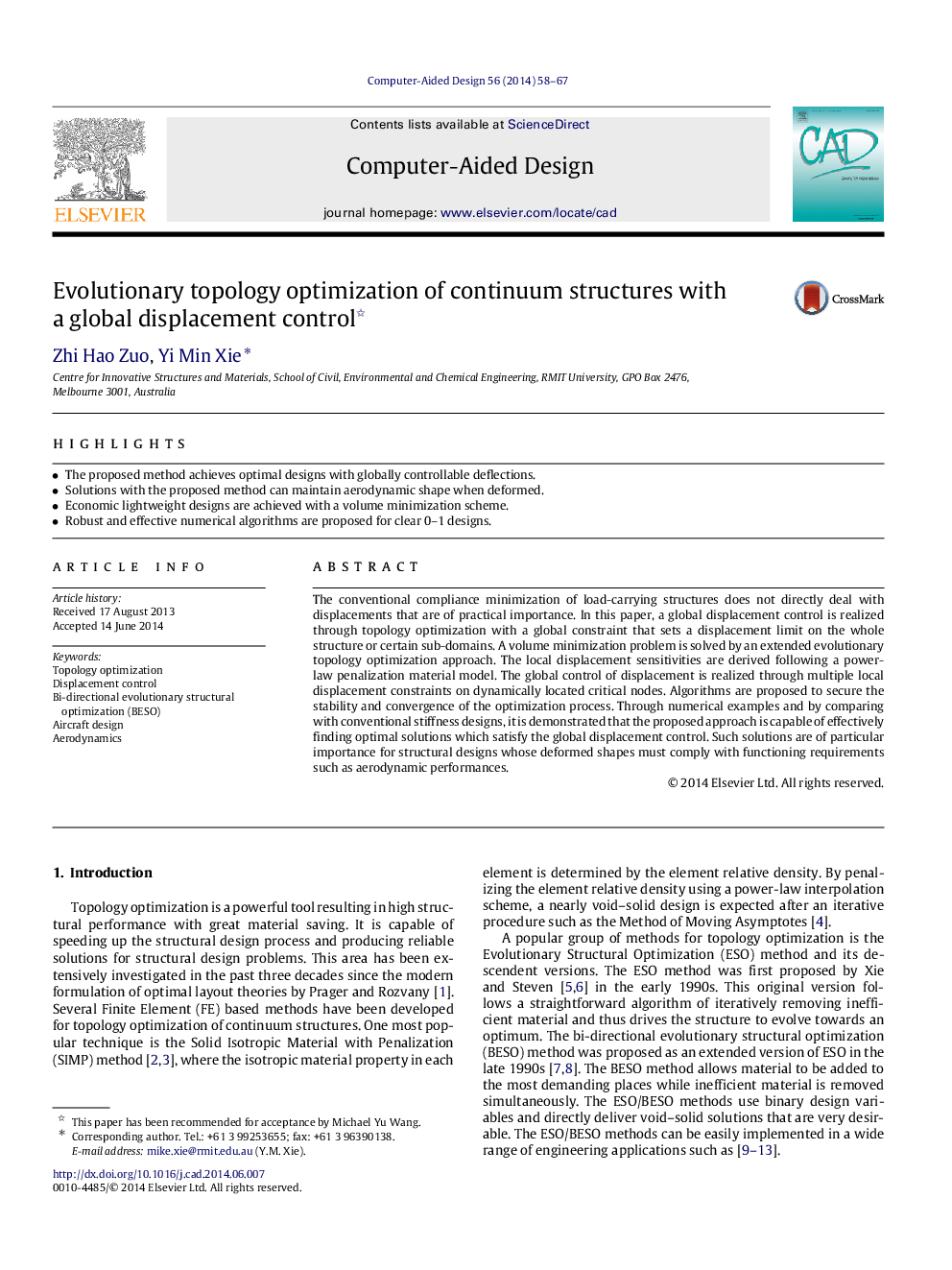| Article ID | Journal | Published Year | Pages | File Type |
|---|---|---|---|---|
| 439444 | Computer-Aided Design | 2014 | 10 Pages |
•The proposed method achieves optimal designs with globally controllable deflections.•Solutions with the proposed method can maintain aerodynamic shape when deformed.•Economic lightweight designs are achieved with a volume minimization scheme.•Robust and effective numerical algorithms are proposed for clear 0–1 designs.
The conventional compliance minimization of load-carrying structures does not directly deal with displacements that are of practical importance. In this paper, a global displacement control is realized through topology optimization with a global constraint that sets a displacement limit on the whole structure or certain sub-domains. A volume minimization problem is solved by an extended evolutionary topology optimization approach. The local displacement sensitivities are derived following a power-law penalization material model. The global control of displacement is realized through multiple local displacement constraints on dynamically located critical nodes. Algorithms are proposed to secure the stability and convergence of the optimization process. Through numerical examples and by comparing with conventional stiffness designs, it is demonstrated that the proposed approach is capable of effectively finding optimal solutions which satisfy the global displacement control. Such solutions are of particular importance for structural designs whose deformed shapes must comply with functioning requirements such as aerodynamic performances.
